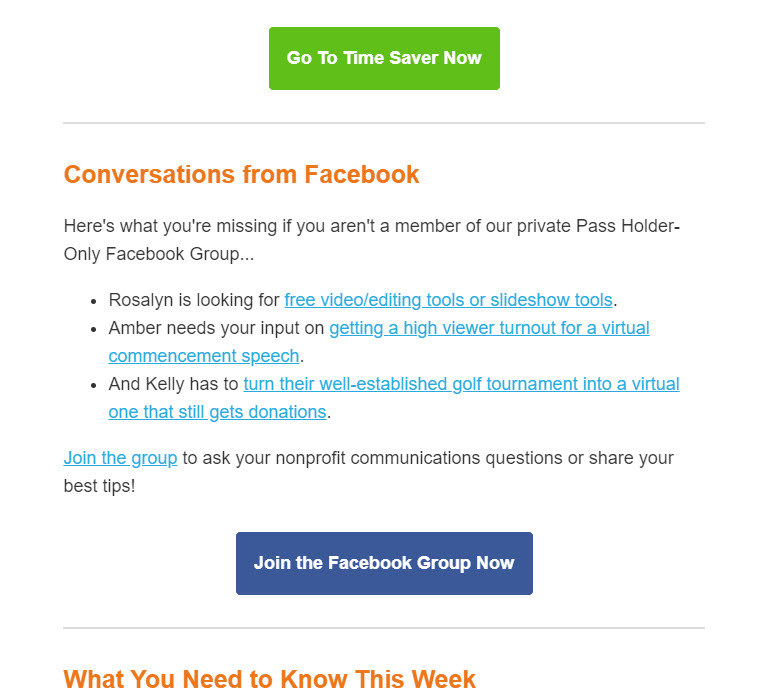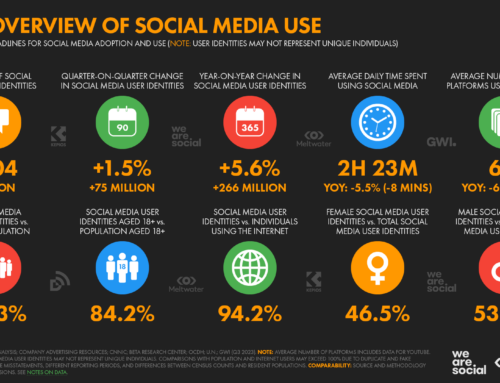Since Facebook has been pushing Groups since even before the pandemic, I have been sharing some tips on making the most of your Facebook Group.
So, now that you have created your Facebook Group and gotten people to join, how do you get them to participate?
Here is how we were able to boost activity in our private All-Access Pass Holder Facebook Group:
We have always been big on multi-channel marketing and we found that using email with our Facebook Group helped it grow substantially.
A little background:
We heard from so many people – especially in the earlier days of nonprofit marketing – that they felt alone and that no one understood what they did.
So, in 2012, we started a private Facebook Group as a way for our Pass Holders to connect with each other – to vent frustrations, share their work and experiences, and ask for help.
It got off to a bit of a slow start though.
Our first step was to recruit moderators who were Pass Holders themselves. We asked them to post questions and try to answer those questions that did get asked.
That helped, but the engagement still wasn’t what we wanted.
That’s when I decided to use our weekly Pass Update email to encourage engagement.
Every week, we send an email to our Pass Holders with links to RSVP for upcoming webinars, a time-saving download, and other resources or updates they need to know about. I added another section devoted specifically to what was happening in the Facebook group

Once this became a regular feature of the Pass Update, engagement in the Group went up considerably.
Why do I think this works?
- It reminds them the Group is there.
- It shows people it’s an active Group.
- It is a form of social proof.
As with anything, people sometimes need to hear about it more than once. So adding this section not only helped with the engagement in the Group, it served as a recruitment tool to get more of our Pass Holders to join.
While Groups do seem to dominate news feeds now, you still have to have active participation. No one wants to ask a question and get crickets. They want to know people are using the Group.
And finally, sharing the types of things our members are posting shows others what they can do in the Group. It also encourages them to share their expertise too: “Oh! I just went through this and know how to help!”
Facebook Groups can be a vital tool in reaching your supporters, but it takes some investment and some trial and error to find out what works for you and your members.
Could you add a section to your email newsletter too?
Let us know how it goes or how you encourage participation in your Facebook Group. We’d love to share your story!






